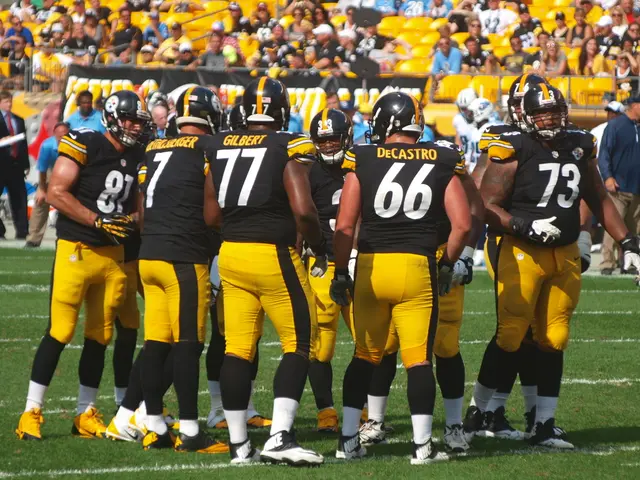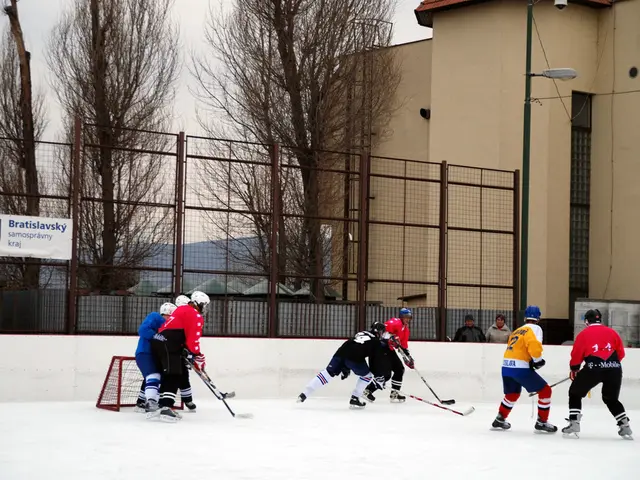Smashing Records, Bridging Gaps: The Changing Financial Landscapes of Women's Sports
Largest Deals in Men's and Women's Sports Post Naomi Girma's Remarkable Salary Boost
Excitement abounds in the world of women's sports, as Naomi Girma recently broke the record for the most expensive women's soccer player, moving to Chelsea for a deal worth about £900,000 ($1.1m). This surpasses the previous record held by Racheal Kundananji, who secured a deal for £685,000 ($843,886) with Bay FC in 2024.
As the women's game gains more attention, it's no surprise that this record-breaking transfer will likely be eclipsed soon. But does this trend extend to other sports and how do they compare to their male counterparts? Let's take a closer look.
Soccer
Naomi Girma's accomplishment places her among the million-dollar players in women's soccer. The transaction value was boosted by a bidding war between Chelsea and French side Lyon, but the annual earnings for Girma remain undisclosed. The striker Sam Kerr, a new teammate to Girma, currently ranks third on the list of the best-paid players in the game thanks to her £449,000 ($553,145) per year contract. Aitana Bonmati, who signed a contract extension in September, tops the list and will earn about $1m per season. In stark contrast, Neymar's 2017 transfer from Barcelona to Paris Saint-Germain for €222m ($231m) continues to reign as the most expensive transfer in men's soccer.
Basketball
The WNBA has experienced growth in popularity, largely due to the emergence of superstar Caitlin Clark. Although she receives a $76,535 base salary, her home games with the Indiana Fever consistently sell out, drawing better average numbers than the NBA's Indiana Pacers. Top players in the WNBA only earn six-figure sums for their efforts, with Jackie Young, a two-time WNBA champion, taking home a little over $250,000 each year through her Las Vegas Aces contract. Steph Curry, the NBA's best-paid player, earns a staggering $55.7m, a 220x difference from Young's salary.
Tennis
Tennis is one of the few sports where equality between men's and women's games is apparent. At the 2025 Australian Open, the men's and women's singles champions will both receive AU$3.5m ($2.2m). However, the same doesn't hold true for lower-tier events, as demonstrated by the 2024 Italian Open, where the men's singles champion won €963,225 ($1m), while the female champion received €699,690 ($728,866), representing a 38% difference.
Golf
Interest in women's golf is reaching new heights, but there is still room for growth to catch up to their male counterparts. The biggest purse for a men's Major Championship in 2024 was $21.5m at the US Open, compared to $12m for the US Women's Open. Despite this gap, the financial landscape in women's sports has evolved significantly over recent years but still remains notably behind that of their male counterparts in terms of pay, media rights, and commercial sponsorship.
The financial landscape in women's sports continues to change, driven by increasing popularity, fan interest, and the involvement of athlete investors. While many disparities remain, the momentum is strong, and the financial gap between men's and women's sports is expected to continue narrowing over time.
- In the realm of sports, basketball superstar Caitlin Clark is helping increase the popularity of the WNBA, with her games consistently outselling those of the NBA's Indiana Pacers, despite earning a fraction of their top player, Steph Curry.
- Interestingly, in sports like tennis, the prize money for major tournaments is equal for both men and women. However, this equality is not evident in lower-tier tournaments, as seen in the 2024 Italian Open, where the men's winner took home 38% more than the female champion.
- Contrasting the notable progress in women's sports, golf still lags behind, with the biggest purse for a men's Major Championship in 2024 being more than double that of the US Women's Open. Nevertheless, the financial landscape in women's sports is evolving significantly, although it still trails considerably behind that of their male counterparts in terms of pay, media rights, and commercial sponsorship.






